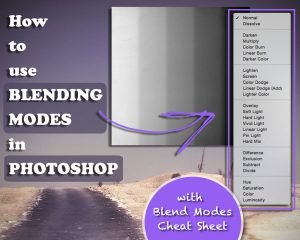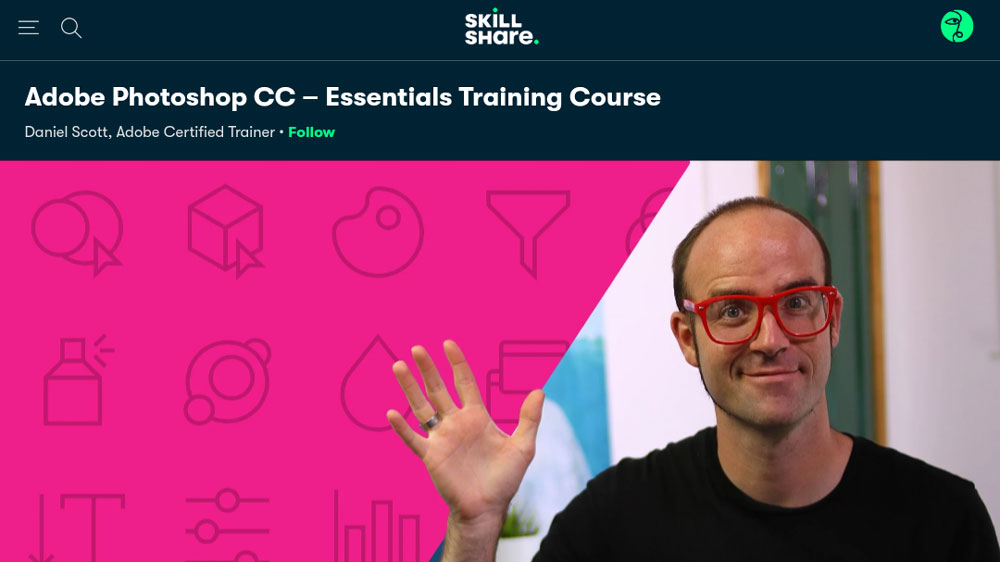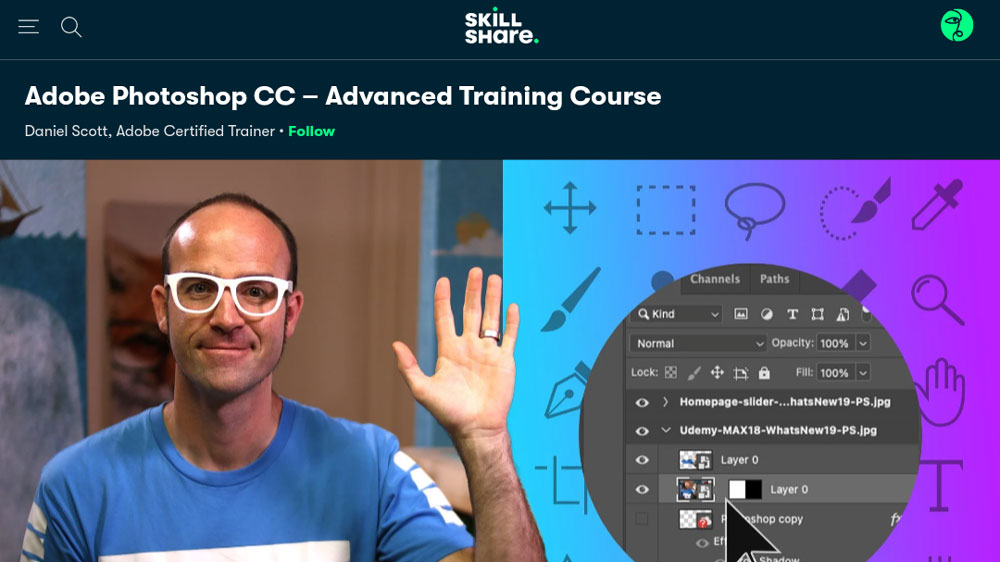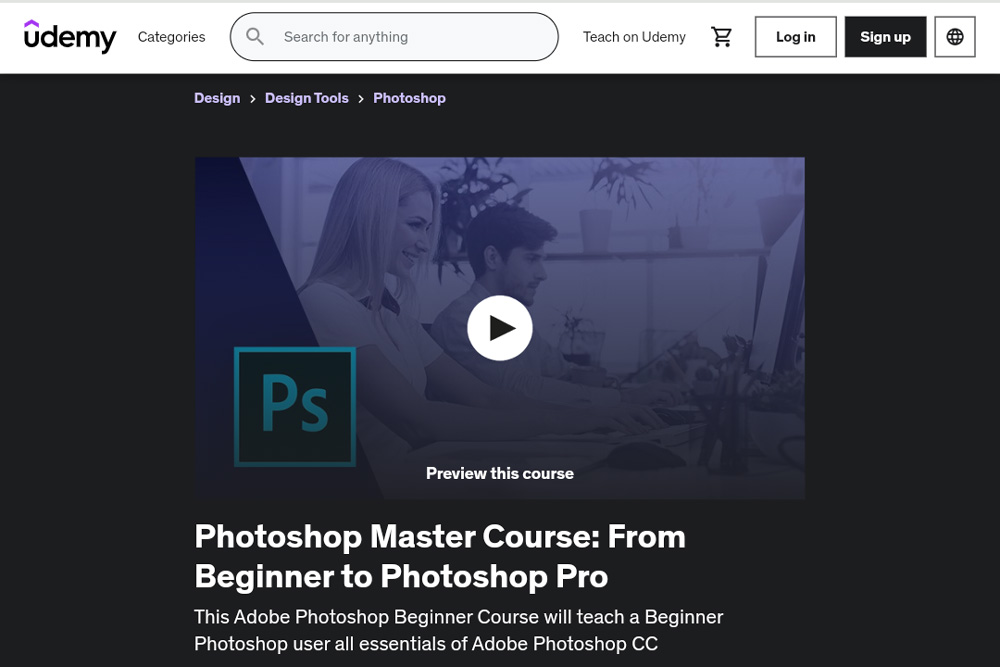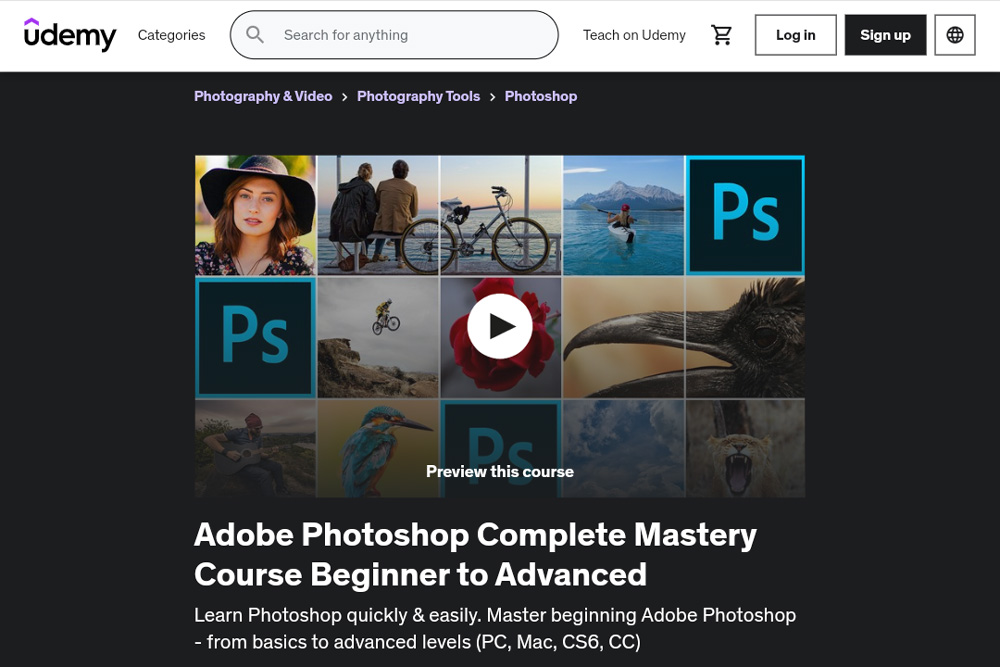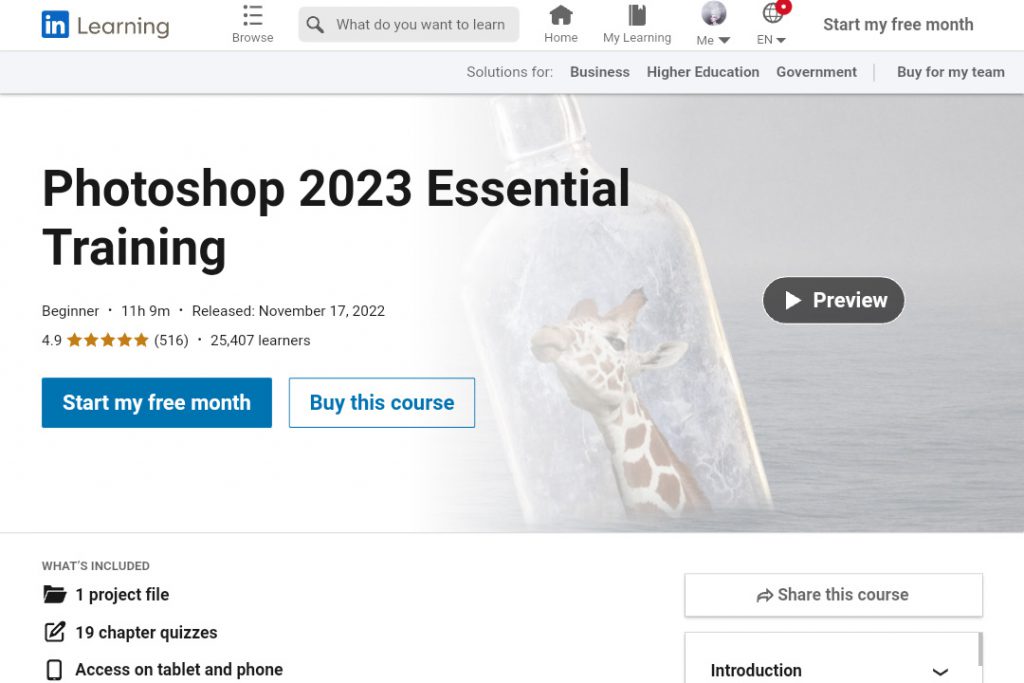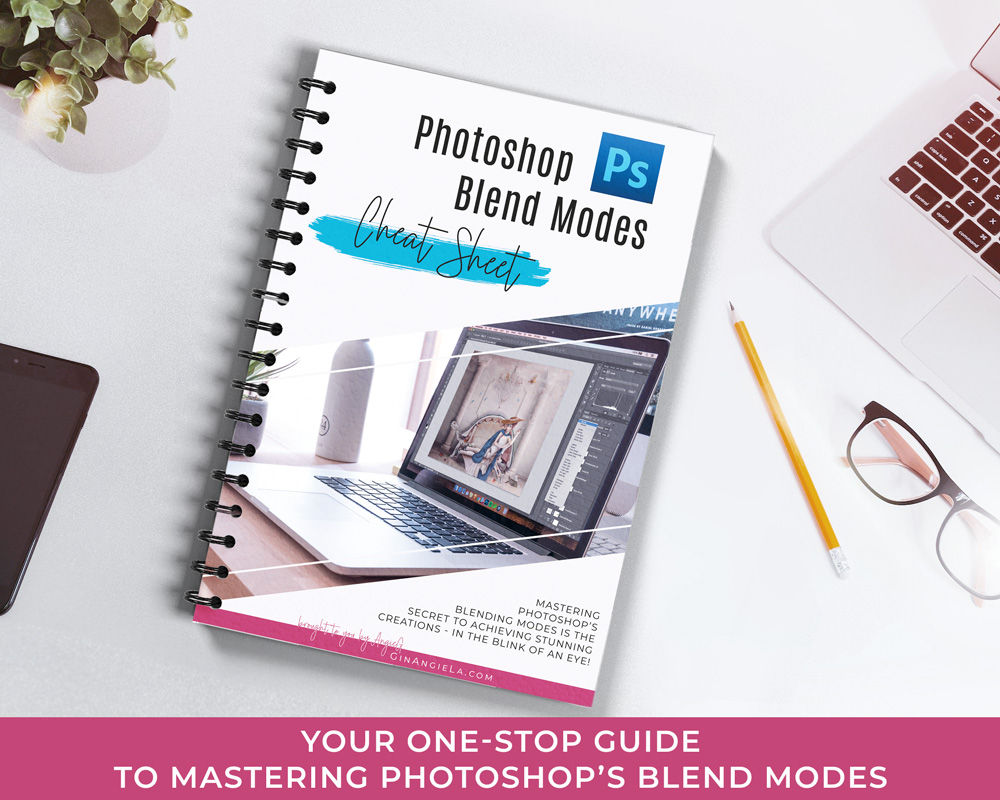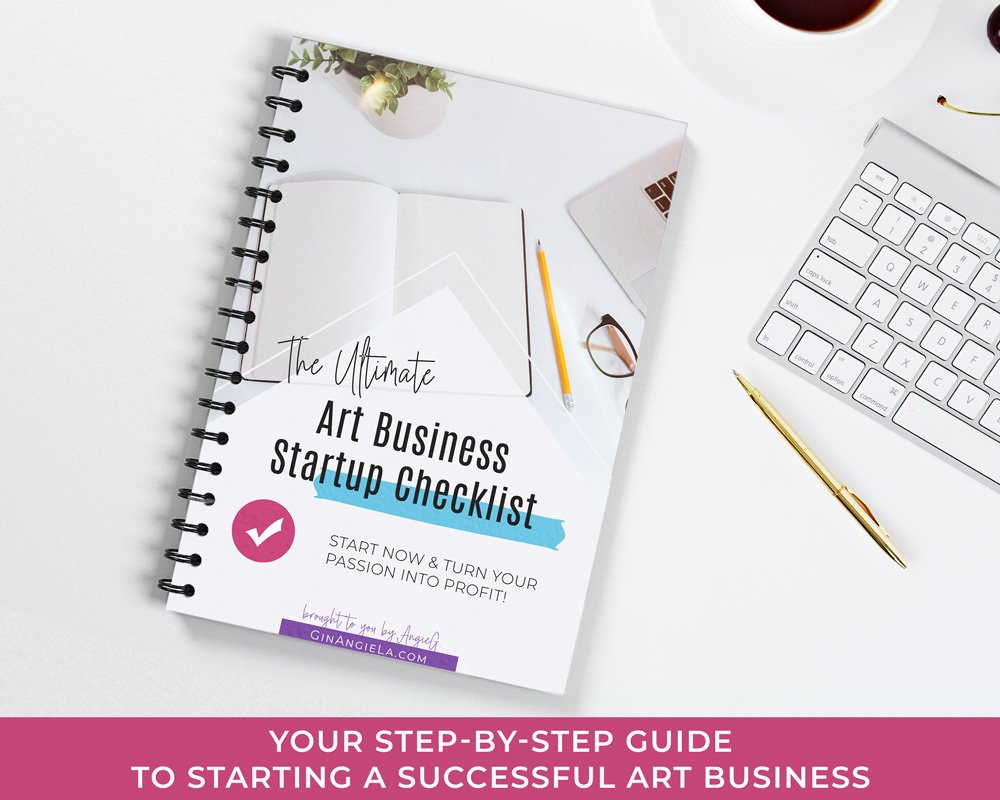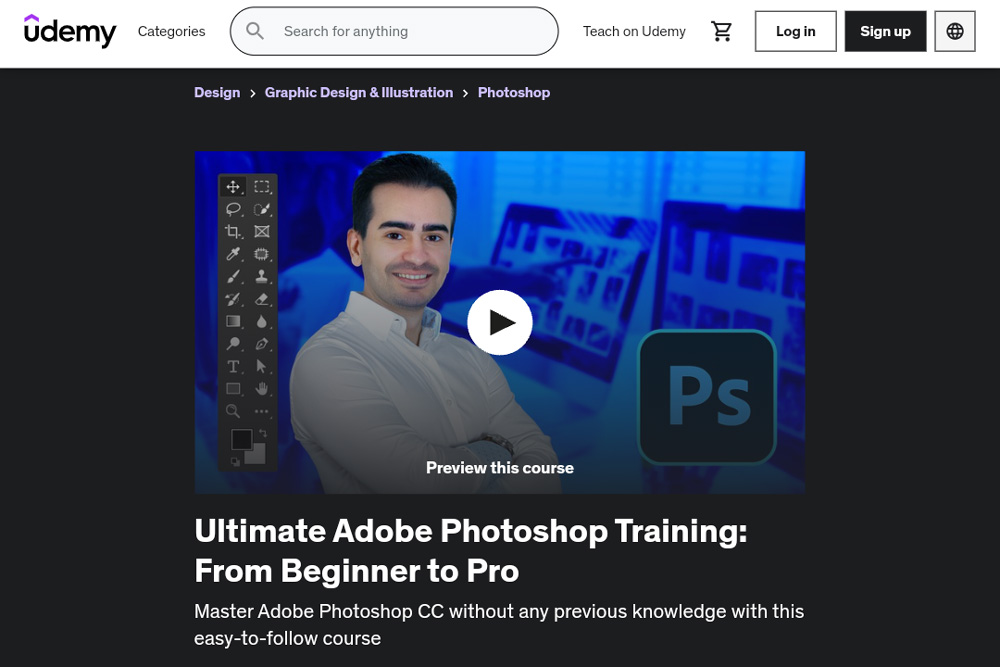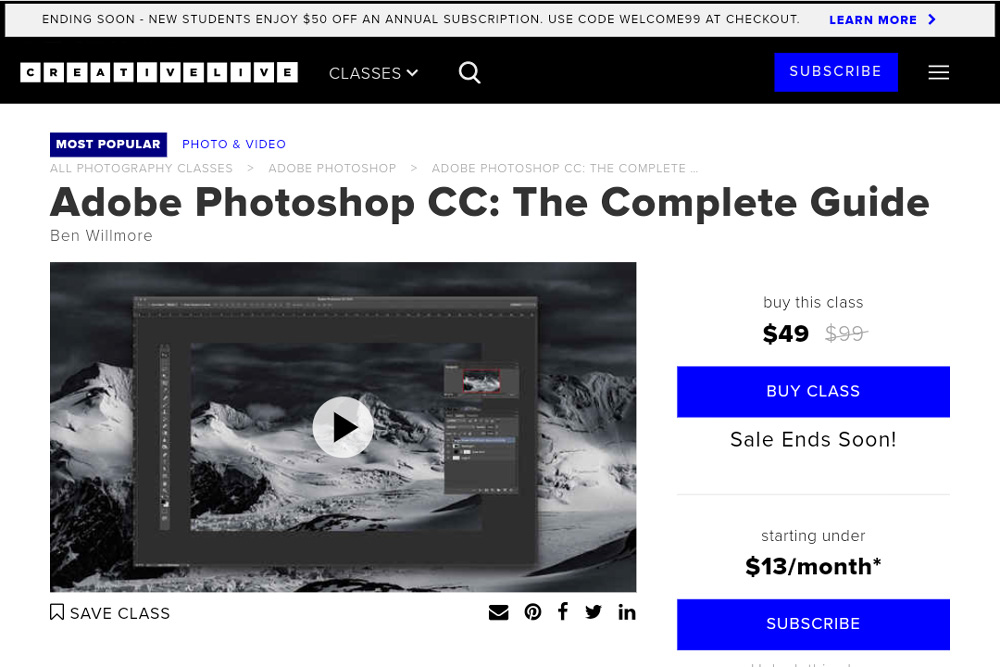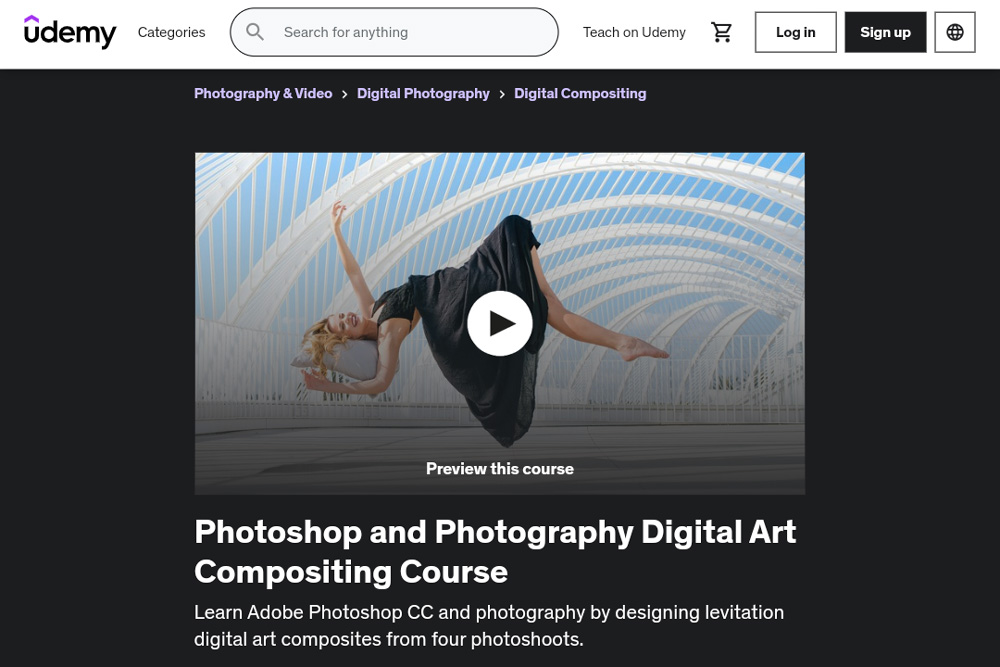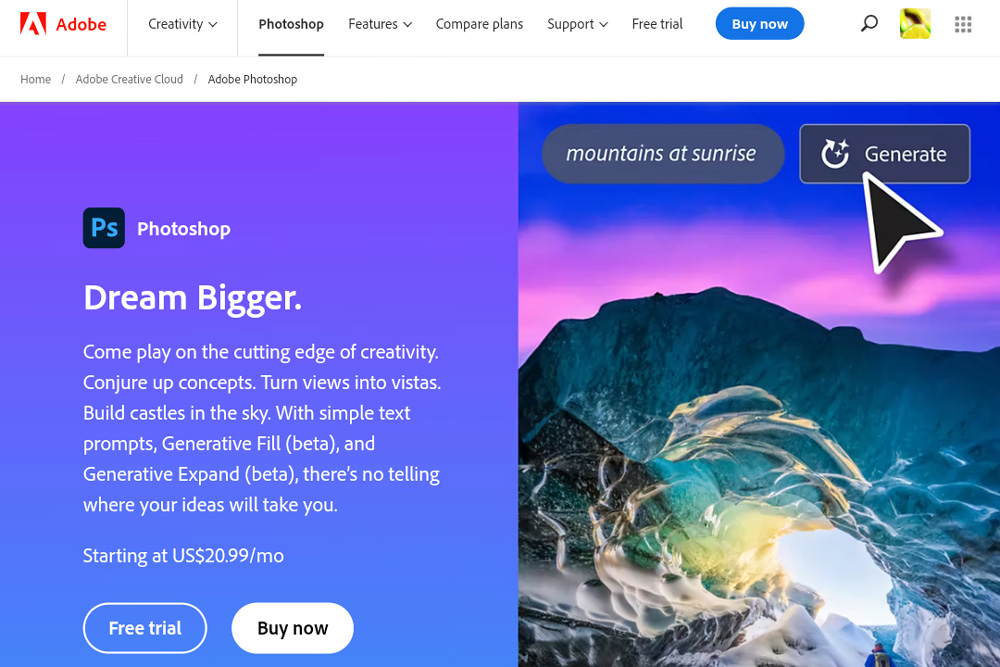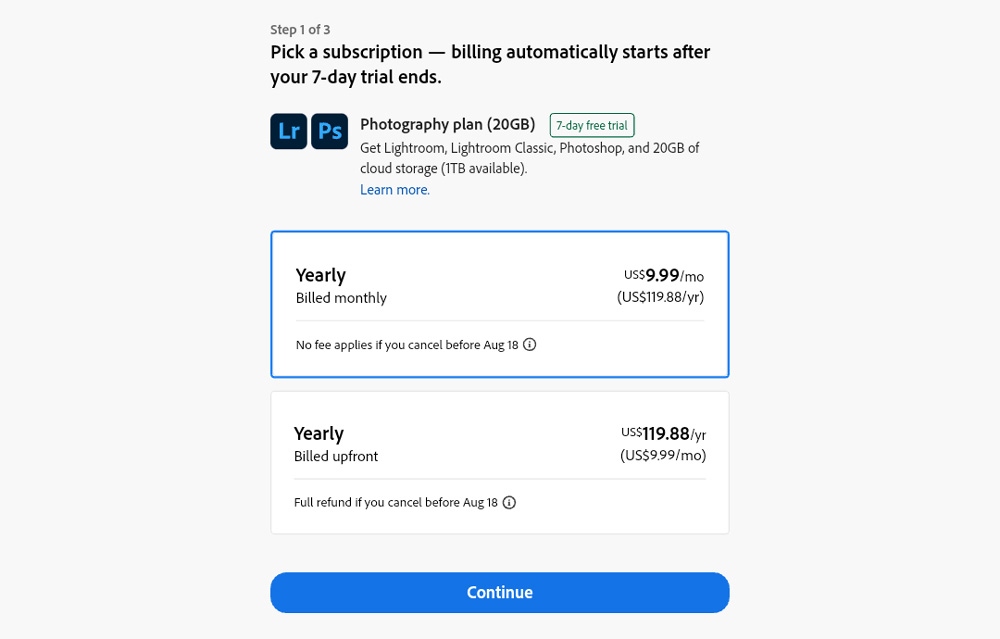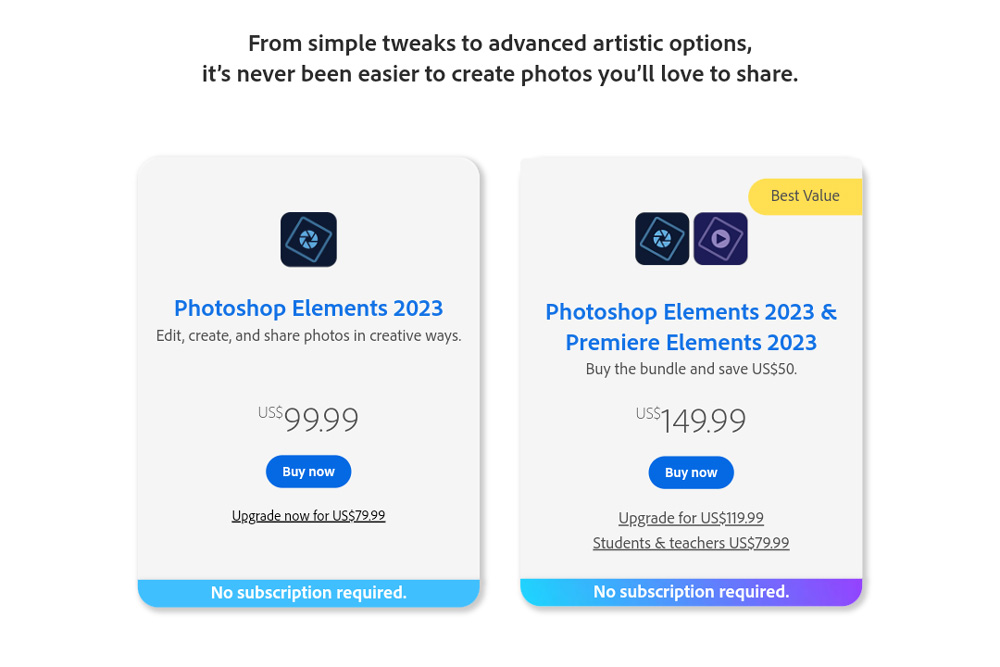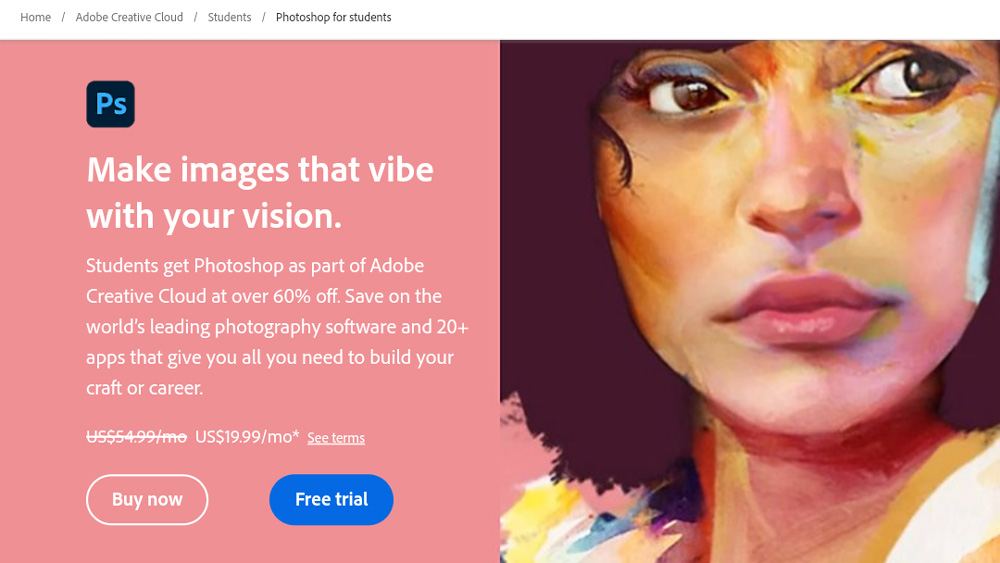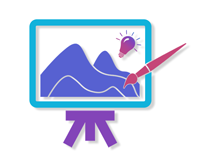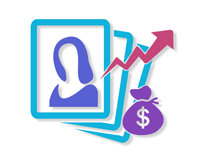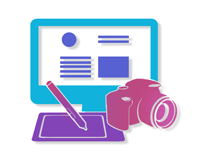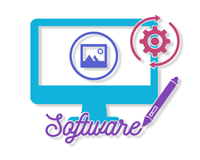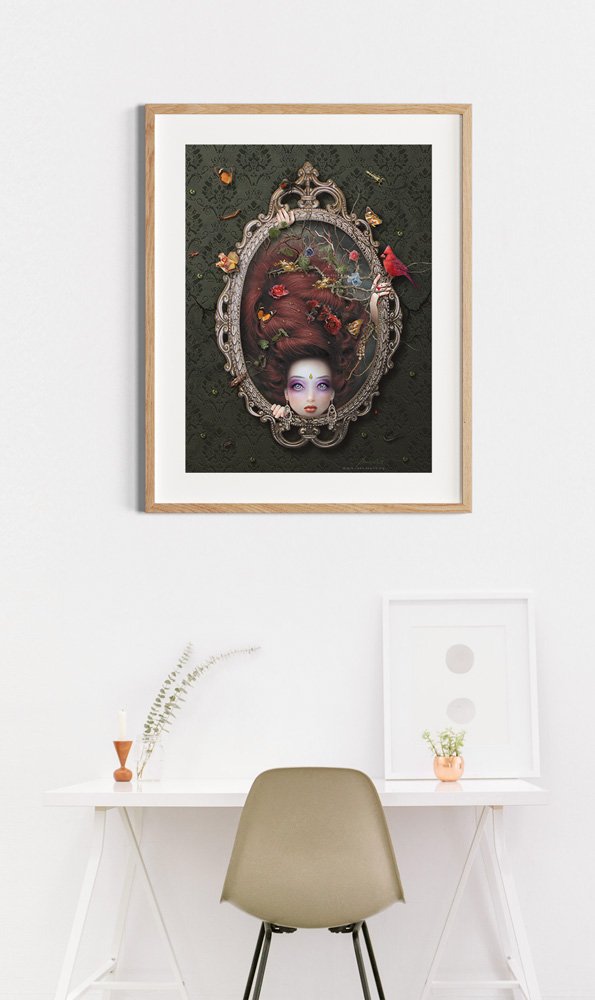Photoshop Tutorials

Popular Photoshop Tutorials
All Photoshop Tutorials
Photoshop Basics
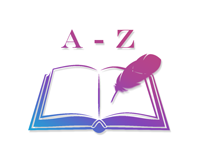
All mastery starts with the basic Photoshop skills.
Photoshop Layer Styles

Learn how to add powerful effects with just a few clicks.
Photoshop Blend Modes
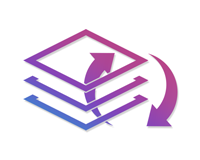
Blend Modes are essential for photo retouching and manipulation.
Photoshop Manipulation
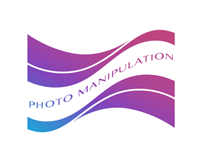
Bring your ideas to life with composite images and collages.
Photoshop Retouching

The best techniques to create amazing photo effects.
Frequently Asked Questions
How can I teach myself Photoshop?
Disclosure: Some links in this post are affiliate links. When you purchase through links on our site, we may earn a commission at no extra cost to you. Learn more.
Adobe Photoshop is the most popular and most powerful graphics program out there. Apart from basic image editing, there are heaps of things you can use Photoshop for: photo manipulation, digital painting, 2D and 3D creation, logo design, portrait retouching, typography, … to just name a few.
Whatever your artistic passion, Photoshop offers plenty of tools and editing possibilities. Naturally, they all come with a learning curve.
The best way to teach yourself Photoshop is by learning from an expert.
No matter whether you have a personal interest in learning Photoshop or whether you like to have it as an additional skill to flaunt on your résumé, the best way to teach yourself Photoshop is by learning from an expert. A real-world teacher can be hard to find and is way more expensive than a virtual tutor.
Evidently, there are tons of Photoshop tutorials online. A quick search on YouTube alone will bring up a vast number of tutorials for different skill levels, areas, and Photoshop versions.
However, when teaching yourself Photoshop, it’s important to follow a good learning guide. Because if you just click through some videos and try to figure things out on your own, Photoshop can quickly become overwhelming and frustrating.
To spare you the pain and frustration, here are a couple of online learning platforms that make it easy and affordable to teach yourself Photoshop!
SkillShare is a popular e-learning platform with lots of courses for creatives. The site offers free courses as well as a subscription-based premium membership.
Understandably, the free courses are more pared-down than what you get with a premium subscription. But there are some good Photoshop tutorials for beginners that are definitely worth checking out.
And for everyone who wants to take their Photoshop learning to the next level, there are also Adobe-certified tutors on Skillshare who offer professional-level training.
Overall best Photoshop training course for beginners led by an Adobe-certified instructor.
This Photoshop course is ideal for total beginners and artists with a bit of previous editing knowledge. Adobe-certified trainer Daniel Scott teaches you all the basic Photoshop skills – one by one.
Excellent online course for all digital artists with previous knowledge who want to dive deeper into Adobe Photoshop.
The Adobe CC Advanced Training is the follow-up course to the Essential Training. Apart from advanced editing skills, you will learn 3D animation and post-production techniques.
Udemy is another highly recommended platform for learning Photoshop online. With 60+ courses, their choice of Photoshop courses is admittedly much smaller as compared to SkillShare, but still more than 6 million people are learning on the platform.
You’ll also find some of the Photoshop experts on Udemy. Adobe-certified trainer Daniel Scott, for example, offers a 10-hour video course that has an impressive 4.7 star rating.
Udemy’s most popular Photoshop course, however, is the one by Manfred Werner. It’s the most comprehensive Photoshop course that you can pretty much find on the web. It totals 33 hours of instruction, broken down into 153 individual lessons that teach you the ins and outs of how to use Photoshop to edit photos. With more than 100k students enrolled, the course has an impeccable 5-star rating on 500+ reviews.
Deep dive into the essentials of Adobe Photoshop CC perfect for beginners who have never worked with Photoshop before.
In this extensive 12-hour video course, Photoshop pro Manfred Werner introduces you to the essentials of the program and makes sure you understand all the basic tools, layers, color profiles, and other settings.
Easy-to-follow course for beginners that will show you how to use Photoshop from scratch.
With lots of downloadable resources, Steve McDonald teaches you in 41 lectures all the nuts and bolts about using Photoshop. After finishing the course, you can claim your official Udemy certificate of completion.
LinkedIn Learning, formerly known as Lynda, offers 400+ Photoshop tutorials, for beginners to advanced to professionals. You can follow an entire Learning Path, such as Become a Photographer or Become a Digital Illustrator, or you can search for the skillset of your interest.
But you even find training courses by Adobe’s very own Photoshop experts. Julieanne Kost’s Photoshop Essential Training, for example, teaches you the nuts and bolts of Photoshop, from workspace to editing tools to layers and masks, to filters and adjustment layers.
When you finish a course, you can get a LinkedIn Learning Certificate that potential employers can then see on your LinkedIn profile. But LinkedIn Learning can also prepare you for real-life Adobe certifications, such the Adobe Certified Associate Photoshop course.
Regularly updated Photoshop training course for beginners that covers all fundamentals of digital image editing at the highest standards.
In-depth Photoshop course covering common editing tasks, such as working with layers, selections, and masks. You will also learn cropping, toning, retouching and non-destructive editing techniques using Smart Objects.
• Adobe Tutorials
Want to know how to learn Adobe Photoshop for free straight from the horse’s mouth? Adobe has its very own tutorial site for Photoshop. The Photoshop tutorials are free and take you through many of the basic skills to start with. Many of their instructive posts are complemented by short videos that double as quick Photoshop tutorials for beginners.
How long does it take to learn Photoshop?
When browsing the web, you will find different opinions on much time it takes to learn Adobe Photoshop.
Some will say it takes 5 hours to learn Photoshop, others will say one weekend is enough, and yet others claim it took them one month to ‘master’ Photoshop.
Let’s face it. Photoshop is an extremely powerful digital art software with heaps of features and functionalities. Most good Photoshop tutorials that teach you the basics already total between 20 and 30 hours of instruction.
With that said, can you learn Photoshop in a week? Absolutely possible. If you have enough time, you can cram the essentials within a couple of days.
But, after watching a tutorial, will you be able to remember everything and put it into practice right away? Chances are you will need to come back to the tutorial from time to time to revisit some of the topics. It’s important to rehearse what you were taught. Otherwise we tend to forget things quickly. After all, practice makes perfect!
But because Photoshop can do so many different things, it’s used in a large variety of areas. Anyone doing photography, graphic design, illustration, digital painting, web design, photo manipulation, comic or manga art may use Photoshop.
Depending on what you want to achieve with Photoshop, you’ll need the basic skills, plus some advanced knowledge in the field you want to work in.
Related: 14 Things Adobe Photoshop Is Used For (That Might Surprise You)
But even then will you know only a fraction of what Photoshop has to offer. What I mean is that it’s not necessary to master Photoshop in all aspects in order to excel in your creative field.
That said, learning the fundamentals of Photoshop is still comparably easy and won’t take too much time.
However, where Photoshop can get frustrating is if you jump straight in and try to learn the advanced features before understanding the basics. This can get confusing and eventually make the learning process take longer than necessary.
If you take one step after the other, you’ll get a solid grasp of the basics and achieve the fastest results.
At the beginning, it’s important to get familiar with Photoshop’s interface, editing tools, and panels. Learn about basic image editing like resizing, cropping and the best file type to save your digital art. Learn how to put two images side-by-side, and then how to put multiple images on one page in Photoshop.
After that, move on to basic color adjustments and learn, for instance, how to change the color of an object. Make yourself familiar with Photoshop’s layer styles and blending modes.
There’s a great Photoshop layer styles tutorial for beginners on this site and also one on how to use blending modes (there’s even a Blend Modes Cheat Sheet for you in the Freebie Library).
Once you’ve mastered these areas, you can start digging deeper. If you’re interested in photo manipulation, learn how to remove an object from a picture.
While you’re learning, keep trying out things. Make your own little creations and put into practice what you’ve learned.
Remember: Practice is what makes you perfect!
- Grab your FREE Photoshop Blend Modes Cheat Sheet
What should I learn in Photoshop?
The best way to learn Photoshop is by starting with the basics. Once you’ve mastered the fundamentals, you can move on to the more advanced Photoshop skills.
Learning the more advanced features always depends on what you eventually want to do with Photoshop. As soon as you have a good command of the basic and advanced skills in your niche, this is where the fun starts and you discover all the cool things you can do with Photoshop!
There are a couple of basic skills that every Photoshop user needs to know.
8 things that you should learn first in Photoshop:
1. Tools Panel
The Tools Panel is probably Photoshop’s most important component. Whether you’re a photo retoucher, digital artist, painter, or photo manipulator – you’ll always need to use the Photoshop Tools.
Start by learning the basic functionalities of the tools and how to customize the toolbar to quickly access your most used tools.
Make sure to also check out the tools that are a bit out of sight… because you’ll find some extra tools hidden beneath the little triangles!
2. Layers Panel
The Layers Panel gives you the greatest control over your images.
You cannot only compose images that consist of multiple layers. You can also adjust settings like Opacity, Fill, Blending Modes, and Color via the Layers Panel.
This will allow you to add many awesome effects to your creations. But the Layers Panel will also help you with general editing and manipulation because it gives you access to Layer Masks.
3. Layer Masks
Layer Masks are essential for non-destructive editing.
Beginners tend to use the Eraser tool to remove unwanted things from their images. Layer Masks are much more efficient to get rid of what you don’t want in your image. Plus, Layer Masks don’t damage the original images, so you can always come back to them and make further edits.
4. File Formats
Once you’ve applied some edits to your image, it’s time to save your work. It’s key to be familiar with the various file format options available in Photoshop.
You will choose a different file format depending on whether you want to save your work for further editing, for web or for print.
→ Best File Type To Save Digital Art
What looks great onscreen doesn’t always look great on paper. That’s why it is important to also familiarize yourself with the different Color Modes, such as RGB and CYMK, and the file formats that you would use for printing your art.
5. Brush Tool
When speaking of ‘brushes’, you probably immediately think of painting. But Photoshop’s Brush Tool has many other functions, too.
Even if you don’t paint, you will use the Brush Tool on Layer Masks and Adjustment Layers. Plus, there are multiple other tools that work similarly to the Brush Tool.
Therefore, understanding the fundamentals of the Brush Tool will benefit you when using the Eraser, Clone Stamp, Dodge & Burn Tools, etc.
6. Adjustment Layers
Adjustment Layers are another non-destructive way of adding amazing effects to your images with just a few clicks.
You can quickly change the color of things, make a photo warmer in Photoshop, or fix the lighting of an underexposed image.
You can use Adjustment Layers to add or remove contrast, convert an image to black and white, apply a gradient, and much more.
7. Blending Modes
Once you feel comfortable working with layers, you can start exploring Photoshop’s Blending Modes. Blending Modes blend layers together and allow you to achieve lots of advanced effects.
There are altogether 27 blend modes available in Photoshop. But for a start, it’s enough to get familiar with the most common ones.
→ TOP 6 Photoshop Blending Modes Explained
Knowing how to use these few blending modes will enable you to modify your images in many different and amazing ways. Once you’ve mastered the basic blending modes, you can look into the full palette of blending options.
8. Keyboard Shortcuts
Keyboard shortcuts are a huge timesaver. Memorize the keyboard shortcuts of the functions you need the most, such as saving your PSD files, zooming in and out, or panning.
Then move on to additional shortcuts for Photoshop tools, opacity, fill, duplicate layers, etc.
There are also shortcuts for the blending modes. You find them all in the Photoshop Blend Mode Cheat Sheet that you can download in the Freebie Library.
- Grab your FREE Photoshop Blend Modes Cheat Sheet
Is Photoshop a good skill to have?
Disclosure: Some links in this post are affiliate links. When you purchase through links on our site, we may earn a commission at no extra cost to you. Learn more.
Adobe Photoshop is the unrivaled tool for image editing across a wide variety of industries. It is used in design, marketing, illustration, web development, animation, … and of course art.
Photoshop is a good skill to have for professionals, students, and art enthusiasts alike. Let’s see why.
4 Reasons Photoshop is a good skill to have
1. Photoshop skills are good for your résumé
Techy-savvy individuals are high in demand. Many sectors make use of image editing. If you take a look at job advertisements, you’ll see that many list familiarity with Adobe Creative Cloud as ‘advantageous’ or ‘highly desirable’. Some even make it an essential requirement.
When looking for a job in marketing, publishing, web development or journalism, for example, your Photoshop skills can make you stand out from the competition and eventually get you your dream job.
2. Choose a creative career path with Photoshop
Photoshop is obviously a good skill to have if you choose to embark on a creative career. If you want to make creating visuals your main job, you will need Photoshop skills. Photoshop is the tool of the trade in many creative fields that deal with imagery.
And even if you want to start your own art business, knowing how to work with Photoshop will be a great asset.
- Grab your FREE Art Business Startup Checklist
3. You can make money with Photoshop
Whether you’re a professional designer or simply an art enthusiast – you can make money with Photoshop.
There are many opportunities available for all skill levels. There are heaps of passive income ideas for artists and you can even make money as a self-taught artist.
To learn more about making money with your art, check out the Showcase & Sell Your Art section on this website!
4. Photoshop is fun
Last but not least, Photoshop is a fun skill to have! While it can definitely help you in your career, it’s also an opportunity to express your creative side.
Photoshop can be an outlet for your feelings, thoughts, emotions, and fantasies that you otherwise wouldn’t be able to communicate. That’s why people say art is a means of self-expression and good for your mental health.
Apart from creating compositions that channel your inner world, you can use Photoshop to retouch images, create text and graphics, or just give your social media posts a nice lil’ extra touch.
Why is Photoshop so popular?
Photoshop is arguably the most popular graphics editor worldwide.
When you hear ‘image editing’ what do you think of first? Most likely Photoshop. ‘Did you photoshop that image?’ ‘Man, this looks really photoshopped!’ Actually, Photoshop is so much part of our culture that it has become a verb.
However, Photoshop hasn’t always been so popular. Back in 1988, at its very beginnings, there weren’t many people who had heard of Photoshop, and far less who were using the software.
In fact, the inventors of Photoshop, the Knoll brothers, were struggling to find a partner company that was ready to market the program.
Unimaginable today. But back then, Photoshop was competing with other image editing programs. Some of them had more advanced features than Photoshop.
So how did Photoshop eventually outrun the competition and become as popular as it is today?
In 1990, the Knoll brothers partnered with Adobe who complemented the software with their own graphics programs, such as Illustrator.
As a result, Photoshop became more powerful and was able to offer better workflow integration than the competing applications. Users could switch seamlessly between Photoshop, Illustrator, and other Adobe products.
Ever since, Photoshop has been upgraded and improved on a regular basis. Newer programs like Lightroom, InDesign, and Premiere have been added to the package and make the workflow even more efficient.
Photoshop now has the most advanced features and tools that satisfy the needs of creatives in many different fields. This is what makes Photoshop unique.
But not only professionals use it. Many amateur designers and art enthusiasts are digging the software, too.
You can find lots of free Photoshop tutorials for beginners to intermediate and advanced techniques online. This site offers quite a few Photoshop tutorials step-by-step with images, too. Feel free to check them out!
…so really everybody can start learning Photoshop nowadays.
With these prerequisites, Photoshop is likely to remain so popular as it is today for a long time ahead!
What is the best online Photoshop course?
Disclosure: Some links in this post are affiliate links. When you purchase through links on our site, we may earn a commission at no extra cost to you. Learn more.
Photoshop is a very complex and powerful program. It comes with a pretty steep learning curve at the beginning. However, it is totally possible to learn Photoshop on your own, but you should make sure to have some good guidance. If you jump straight in, things can quickly get confusing.
That’s why it is best to take an online Photoshop course.
Good courses walk you step-by-step through the program, explaining the tools and features one by one so you feel confident using them at home. The instructor should be experienced and know how to convey their expertise to the students. Some trainers are also Adobe-certified.
Last but not least, the course should provide you with downloadable materials for rehearsal and practice.
Generally speaking, the longer the course, the more comprehensive it will be. If you’re a total newbie, it’s important to choose a course that covers the basic Photoshop skills.
To follow along and try out the things you are taught, you will need a copy of Photoshop. You can start with Adobe’s Photoshop seven-day free trial here. After that, the basic Photoshop and Lightroom package is around $10 a month.
Many courses will also work with older versions of Photoshop. Just keep in mind that the interface may look different and that not all of the latest features are available with older versions.
Best online Photoshop courses for beginners
Udemy’s Ultimate Photoshop Training is the overall best online Photoshop course for beginners. It’s a comprehensive course with 14 hours of instruction that will provide you with a solid foundation. It comes with around 180 downloadable resources and more than 250 free PSD files you can use for practice.
The good thing is that the material works with older versions of Photoshop, too. So even if you’re not using the most recent Photoshop version, it’s no problem to follow along. No prior experience needed. This online course lives up to what it promises: it takes you from an absolute beginner to a pro-level Photoshop user!
The Photoshop Beginners Mastery: Zero To Hero is the crash-course variant. It’s very much like the previous Udemy course, just faster. Three hours of instruction will get you clued in on Photoshop’s essential tools, workspaces, panels, layers, and masks.
You’ll learn the fundamentals of editing and enhancing your images with different effects, working with various file formats, and integrating Adobe Bridge with Photoshop. The course is taught by Chad Neuman and is available in several languages. There are lots of articles and other resources that prop up the lessons and help you get on quickly.
The Photoshop Essential Training is a great starting point for users who are completely new to Photoshop. The course starts with the very basics and breaks down everything you need to know. For example, you will learn how to open images from Adobe Bridge and Lightroom, how to work with layers and masks, and how to customize keyboard shortcuts to speed up your workflow.
There’s an entire section that will teach you how to remove the background and unwanted objects from a picture. The course comes with downloadable files and quizzes, and the option to get a certificate upon completion.
The Beginner to Advanced Photoshop Course is a multi-step training program led by Phil Ebiner. The course makes Photoshop easy to learn, even for complete newbies. It starts from zero and shows you everything from launching the software, understanding the interface to creating and saving new files to managing photos and projects.
You can follow along at your own pace. Downloadable project files and other documents help you put your learning into practice. If you ever get stuck on a problem, you can post your question and receive hands-on advice from the instructor himself or other experienced users.
The SkillShare Essentials Training Course is one of the most popular Photoshop courses on SkillShare. It is led by Adobe-certified trainer Daniel Scott, who is a legend in his field.
Scott’s training course is one of the most comprehensive Photoshop courses that you can find online. Eight hours of instruction guide you from the basics through to more complex tasks like manipulating images and making your own creations. Along with the detailed lessons, you will get lots of sample files and exercises that support your learning.
Best online Photoshop courses for intermediate learners
The Complete Guide to Adobe Photoshop CC is a highly recommended course for beginners to advanced users. By registering on CreativeLive, you’ll get lifetime access to Ben Wilmore’s comprehensive training. The course totals 25 hours spread over 21 classes and receives outstanding reviews.
Wilmore is an experienced Photoshop trainer who has taught more than 100k students the ins and outs of the program. The course is the perfect blend of easy to more complex techniques. Among others, you will learn how to use camera RAW files and how to manipulate images and create your own artwork. You can download additional resources and always come back to the course in the future to go again over certain points you need to refresh.
If you are interested in both Photography and Digital Art Compositing, then this is the right course for you. Led by a photographer and a Photoshop expert, this Udemy course will take you on different photo shoots and their post-processing in Photoshop. You’ll learn everything from setting up the photo sessions, capturing the shots right through to the different Photoshop tools for editing the images.
There are 38 online classes totaling 3.5 hours that teach you different techniques pertaining to photography and compositing images. You can download all images from the photo shoots, multi-layered PSD files as well as handouts and other helpful guides.
Best online Photoshop course for advanced learners
This Adobe Photoshop CC Advanced Training Course is for users who already have a good understanding of Photoshop and are ready to delve into the more advanced features. The course includes more than 100 individual lessons totaling over 10 hours and is led by Adobe-certified trainer Daniel Scott.
By the time you complete the course, you’ll be familiar with all aspects of the software. You’ll know how to edit and enhance your images, how to retouch skin, teeth, eyes, and hair, and how to work with fonts and create different visual effects. What’s more, you’ll also learn how to edit videos and create animations. There are lots of downloadable resources for the different projects and you’ll also get project exercises to practice your newly learned skills.
Is Photoshop hard to learn?
Whether or not Photoshop is hard to learn is difficult to answer.
Have you been working with other graphic editors prior to learning Photoshop? Are you familiar with related design apps, such as desktop publishing? Are you generally a techy-savvy person or not so much?
These and other factors will eventually determine whether or not you’ll find it hard to learn Photoshop.
Photoshop is definitely a huge software program, with tons of functions and tools. It is used in many creative fields – from marketing, to web design, to illustration, to photography, to digital art, and so on. Basically, anything that has to do with image editing is done with Photoshop.
That said, you don’t need to master everything there is to know about Photoshop. As a matter of fact, you will be using only a fraction of Photoshop’s capabilities for your purposes.
When you begin learning, it’s important to start with the basic Photoshop skills. Because no matter for what purpose you intend to use Photoshop, you need to be familiar with the fundamentals.
So get clued in about the interface, tools, palettes, color adjustments, shortcut keys, etc. before moving on to the more advanced features. That way, Photoshop is not hard to learn.
If you jump into the more complex features too fast early on, this is where Photoshop can become frustrating. Take one step at a time. Start with easy Photoshop tutorials for beginners about basic tools, backgrounds, layers and masking, and how to use color.
After that, check out intermediate Photoshop tutorials about blend modes and blending two images together, effects, typography, how to remove an object, or how to cut out an image.
Depending on what you wish to do in Photoshop, you can then dig deeper into the functions relating to your niche.
For example, if your favorite area is photography, have a look at Photoshop tutorials about editing photos, retouching, and using the clone stamp tool.
If you’d love to create composite images, dig into Photoshop collage tutorials and advanced photo manipulation.
When you know how to use and combine all the different features to bring your ideas to the canvas, this is where the fun starts!
Is Photoshop CC the same as Photoshop?
Disclosure: Some links in this post are affiliate links. When you purchase through links on our site, we may earn a commission at no extra cost to you. Learn more.
Adobe Photoshop CC (Creative Cloud) was launched in 2013 and is the updated version of Photoshop CS6.
Before 2013, Photoshop used to be available for purchase with a single license and a one-time payment for the user.
With the introduction of Creative Cloud, Photoshop is now only available online, based on a monthly or yearly subscription plan.
In terms of Photoshop CC vs. Photoshop CS6, both versions are similar to a large extent.
Photoshop CC, however, comes with many updated and new features that are not available in Photoshop CS.
Nevertheless, Photoshop CS6 and earlier versions are still powerful applications for digital art and photography. Since you never use the whole array of functions Photoshop offers, older versions may still satisfy your editing needs.
Which Photoshop version is best?
Disclosure: Some links in this post are affiliate links. When you purchase through links on our site, we may earn a commission at no extra cost to you. Learn more.
If you’re trying to find the best Photoshop version to work with, you can choose between three options.
The most up-to-date, full-blown version of Photoshop is available through Adobe’s subscription-based Creative Cloud service. The second option is Adobe Photoshop Elements, which is sold under a perpetual license with a one-time payment for the user. The most recent Photoshop version is Photoshop Express, a stripped-down image editing app for mobile devices.
These are all Photoshop versions at a glance:
Photoshop CC was launched in 2013. It is a web-only version that is available with a monthly or year subscription plan to Adobe’s Creative Cloud service.
Photoshop CC comes with a set of upgraded and new features that benefit photographers and digital artists of all kinds. You can retouch photos, heavily manipulate them, or create digital drawings, paintings and illustrations.
Related: [MUST-KNOW] 25 Reasons Why You Should Get Photoshop
The Creative Cloud version includes the most powerful and extensive editing features currently available on the market. It is being updated regularly and all subscribers automatically get access to the latest features.
As compared to Photoshop Elements, Photoshop CC offers way more advanced editing capabilities and also supports CMYK Color mode. This is a must for all artists who want to save their works for printing.
Naturally, the many tools and functions make it harder to learn Photoshop as a beginner.
To not get overwhelmed and frustrated by the program, I highly recommend you go through Photoshop tutorials or follow an online Photoshop course. It’s important to learn things step-by-step. If you’re digging too deeply too quickly into its advanced functions, you will just get confused.
Start with the basics and then make your way up to the advanced features. This will give the best and fastest results.
Check out the other toggles above, ‘How Can I Teach Myself Photoshop?’ and ‘What Is The Best Online Photoshop Course?’, to see the best options for learning Photoshop.
Photoshop Elements is geared towards beginner and intermediate photographers.
It provides you with the basic photo editing functionalities, but also includes some of the more advanced Photoshop tools. You can make color and brightness adjustments, sharpen your images, and apply other filters.
Photoshop Elements is way easier to grasp than Photoshop CC. You do not necessarily need to sift through tutorials or follow an online course to get to grips with Elements.
This makes it definitely a good starting point for beginners. However, if you want to take your editing to the next level, you need to upgrade to Photoshop CC.
Photoshop Express is Adobe’s latest addition to Photoshop suite. Photoshop Express an editing app for iOS and Android phones and tablet devices that has many of the features you know from the desktop version.
The tools allow you to make quick edits on your phone or tablet. You can apply filters and effects, add text to your images, change exposure, brightness, saturation, and more. While the Express version is not as powerful as the full app, it still offers excellent capabilities for editing your photos on the go.
You can download Photoshop Express in various app stores, such as the Apple Store if you have an iPhone or iPad, or via Google Play for your Android device.
The good news is that the basic Photoshop Express version is completely free! There is also a PS Express Premium that does cost a fee, but it’s very affordable.
Learn more: Adobe’s Free App: 10 Reasons Why Photoshop Express Is Worth It
These are your options in a nutshell:

Adobe Photoshop

Adobe Photoshop Elements
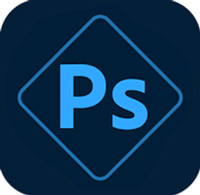
Adobe Photoshop Express
Adobe Photoshop Express is the stripped-down version of Photoshop. If you don’t need the advanced features of the full version, then Photoshop Elements is a more affordable alternative that still offers great functionality.

Adobe Creative Cloud
Can I buy Photoshop permanently?
Disclosure: Some links in this post are affiliate links. When you purchase through links on our site, we may earn a commission at no extra cost to you. Learn more.
Back in 1990, at the very beginnings, buying Photoshop was not a problem. Photoshop used to be sold in a pay-per-license format. That means you had to pay once and could use the application as long as you wished.
Sure, Adobe would bring out upgrades on a regular basis. But once you had purchased the full version, you could get those upgrades at a reduced price – or simply continue without them.
The license type that Photoshop used to sell under is a so-called perpetual license. It’s a standard license for consumer single-user software that doesn’t expire.
Between 2012 and 2017, you could still choose whether you wanted to buy certain professional Adobe products under a perpetual license or by subscription.
However, at the beginning of 2017, Adobe changed their licensing conditions dramatically. As of January 9 that year, the Creative Suite applications are no longer available for sale. Photoshop CS6 was the last app in the Creative Suite series that you could purchase.
Since then, Adobe Photoshop, Lightroom, Illustrator, InDesign, Premiere Pro, After Effects, etc. are available only as part of a paid Creative Cloud membership.
Photoshop CS was renamed Photoshop CC, standing for Creative Cloud. Ever since, you can license Photoshop CC 2017, Photoshop CC 2018, Photoshop CC 2019, … on a temporary basis only. Meaning, you retain your license to use the software as long as you pay a monthly or yearly fee.
While the complete CC package with 20+ creative desktop and mobile apps, 100GB of cloud storage, Adobe Portfolio and Fonts costs around US$60 a month, there are also many single-app subscription options available.
The most affordable is the Photography Plan for US$19.99 a month. It includes Photoshop, Lightroom Classic, and Lightroom.
Making their products available by subscription only was without doubt a smart move. Since changing over to the online membership model, Adobe have been increasing their revenue exponentially.
With that said, the chance to buy Photoshop permanently again any time soon is pretty much out of the way because subscriptions are way more profitable than perpetual licenses.
Adobe’s only non-subscription product is Photoshop Elements.
Photoshop Elements retails for around US$100 and comes with many of the advanced features of recent Photoshop versions. With some of the plugins available, Photoshop Elements is more powerful than older versions of Photoshop, though.
If you’re toying with the idea of buying a used copy of Photoshop, keep in mind that the older version needs to be supported on your computer hardware and operating system. As Photoshop CS6 was released back in 2012, it may not run on your current Mac or PC. So always make sure to double-check before getting any older version of Photoshop!
Why is Photoshop so expensive?
Disclosure: Some links in this post are affiliate links. When you purchase through links on our site, we may earn a commission at no extra cost to you. Learn more.
Why is Photoshop so costly? This is a question that many creatives might be wondering about. Especially, if you were used to being able to buy Photoshop permanently for a lifetime in the past.
From its beginnings in the 1990s until around 2000, Photoshop used to sell under a perpetual license. That means you could buy the program once and then use it as long as you wished. The regular Photoshop version retailed for around $700, while the extended version cost about $1000.
With the introduction of Adobe’s Creative Suite in 2003, Photoshop became more powerful and purchase prices ranged from $1300 to $2600.
However, since Adobe launched its Creative Cloud service in 2013, you can use the full-fledged and most up-to-date version of Photoshop for around $20 a month.
The transition from the one-time purchase software to the online membership model wasn’t without problems, though. When Adobe first announced their subscription plans, they were met with quite some indignation on the users’ side.
And, admittedly, their Creative Cloud had everything but a smooth start. In mid-2013, the platform was down for an entire day and subscribers couldn’t use any of the Adobe applications. Shortly after, it fell victim to hackers and got pirated.
Is Adobe Photoshop expensive?
While some users are happy to get Photoshop at an affordable monthly price, others argue that the image editor is more expensive under the subscription model. They say the buying Photoshop would actually be cheaper than paying a monthly or yearly usage fee.
However, this argument is extremely difficult to figure out. It largely depends on what subscription plan you’re on, how many other Adobe products you’re using, and whether you are a professional or hobbyist Photoshop user.
Adobe offers different subscription plans for Photoshop and the complete Creative Cloud service. When you wanted to buy Photoshop in the past, you could choose between different options: regular Photoshop and Photoshop Extended, Creative Suite Design Standard, Creative Suite Production Premium, Creative Suite Master Collection, and so on.
All these versions came with a different price point. What complicates things even more is that Adobe used to release frequent updates. Those upgrades would complement a previous Photoshop version and were available to Photoshop owners at a reduced priced. However, many users wouldn’t get those upgrades and instead continue using their old version of Photoshop.
With all these variables in place, how do you objectively compare the pricing of Photoshop before and after the introduction of Creative Cloud?
All in all, it’s basically like comparing apples with oranges.
And regardless how you or I feel about Adobe’s subscription model, it won’t make them switch back to their old one-time purchase format.
In other words, we need to deal with things as they are.
Is Photoshop worth it?
Whether or not Photoshop is worth getting is largely down to your personal needs.
Are you using Photoshop on a professional level? Are you making money with your art? Or are you using Photoshop more randomly during your free time? Here are 25 reasons why you should get Photoshop.
But even if you are ‘just’ an art lover who enjoys being creative, paying $10 a month might not be the worst option for you.
You will get access to Photoshop, Lightroom, cloud storage, Adobe portfolio, and other things. Plus, any time new advanced features are being added to Photoshop, you will automatically get to use them – at no extra cost.
Check out the Photography Plan for US$19.99 per month here.
Is Photoshop worth buying for you?
Adobe Photoshop is the most powerful and feature-rich image editor out there. It’s the main tool for professional creatives in many industries. With heaps of tools and possible effects, it allows you to enhance your images, from simple color adjustments to the most advanced edits available in the market.
You can also use Photoshop files with all the other applications in the Adobe Creative Cloud. For example, after editing an image in Photoshop, you can animate it in After Effects, and so on.
In the end, it’s totally up to you to decide whether Photoshop is worth buying for you. If you work on a professional level, it’s probably a must. But also if you simply enjoy giving your creativity a visual outlet, Photoshop is a great tool to have
On the other hand, if you’re still a newbie to digital art and don’t use Photoshop often enough to justify the price, then going with an alternative digital art software may be the better option. For example, Affinity Photo is almost as good as Photoshop, but more affordable
How to get Photoshop for free?
The good news is that you can try Photoshop for free to see whether or not it’s a good fit for you.
On Adobe’s website, you can download a Free Photoshop Subscription that will last 7 days. This is a great opportunity to test the waters without spending any money! You can start the Free 7-day trial here.
The free trial includes all the features and updates in the latest version of Photoshop and works on macOS, iOS for iPad Pro, and Windows. The free trial is not available for smartphones, only for desktop and iPad.
After that, you’ll need to choose a subscription plan. If you just want to use Adobe Photoshop, you can get on the Single App Plan for $22.99 per month. You will get access to all the latest features and updates of Photoshop, plus 100GB of cloud storage.
A cheaper option is the Photography Plan. It includes Photoshop, Lightroom, Lightroom Classic, and 1TB of cloud storage. The main difference to the Single App Plan is that you will have no access to Adobe Express Premium with free mobile templates. However, for $19.99 monthly, the Photography Plan is definitely great value for money!
How much is Photoshop for students?
Another great thing is that all Adobe products are available with major discounts to students and teachers.
That means even as a student on a tight budget, you can still learn how to use Photoshop! You can use this link to redeem the special discount for students and teachers.
With the All Apps Deal for Students and Teachers, you will not only have the opportunity to download Adobe Photoshop for a very cheap price, but you’ll also receive all the other apps produced by Adobe. It is $19.99 per month, while the regular price would be $59.99/month.
The All Apps deal includes:
- 20+ creative desktop and mobile apps including Photoshop and Lightroom
- 100GB of cloud storage
- Adobe Portfolio
- Adobe Fonts
- Adobe Spark
What is the oldest version of Photoshop?
Photoshop has been around for about 30 years. But when the digital art software was initially created, it was nowhere close to the powerful image editor we know today.
Photoshop was created by two brothers, John Knoll and Thomas Knoll. In 1987, Thomas Knoll, then a PhD student in engineering at the University of Michigan, wrote a small program to translate monochromatic images to grayscale. After a while, he was able to add more image effects.
At the same time, John Knoll was a special effect designer at George Lucas’ Industrial Light and Magic. With Thomas’s programming skills and John’s design expertise, the two brothers continued to develop the software and first released Image Pro in 1988.
Shortly after, they entered into a partnership with scanner-manufacturer Barneyscan. The software was then sold under the name Barneyscan XP along with the company’s scanners.
Only a few months later, Adobe got wind of the program. The Knoll brothers teamed up with Adobe, and in February 1990 Adobe Photoshop 1.0 launched on the market.
This was the beginning of something big.
The software has since been on the rise. The name even made its way into everyday language: nowadays, we are photoshopping images.
Here is the complete history timeline of all Photoshop versions:
- 1988: Image Pro
- 1989: Barneyscan XP
- 1990: Adobe Photoshop 1.0
- 1991: Adobe Photoshop 2.0
- 1993: Adobe Photoshop 2.5
- 1995: Adobe Photoshop 3.0
- 1996: Adobe Photoshop 4.0
- 1998: Adobe Photoshop 5.0
- 1999: Adobe Photoshop 5.5
- 2000: Adobe Photoshop 6.0
- 2001: Adobe Photoshop Elements
- 2002: Adobe Photoshop 7.0
- 2003: Adobe Photoshop CS
- 2005: Adobe Photoshop CS2
- 2007: Adobe Photoshop CS3
- 2008: Adobe Photoshop CS4
- 2010: Adobe Photoshop CS5
- 2012: Adobe Photoshop CS6
- 2013: Adobe Photoshop CC
- 2014: Photoshop CC 2014
- 2015: Photoshop CC 2015
- 2016: Photoshop CC 2016
- 2017: Photoshop CC 2017
- 2018: Photoshop CC 2018
- 2019: Photoshop CC 2019
- 2020: Photoshop 2020 + Photoshop 2020 (21.1)
- 2021: Photoshop 2021 (22.0)
What careers use Photoshop?
Possessing Photoshop skills can be helpful to find a job in many fields. While a lot of people think Photoshop is only used for photo editing, it can do so much more.
Photoshop actually started out as a raster image editor. Raster images are made up of pixels, such as photographs, web graphics, and scans. Over the years, other powerful features have been added and today Photoshop is used in various careers.
Related: 14 Things Adobe Photoshop Is Used For (That Might Surprise You)
That said, you can definitely earn money with Photoshop.
Of course, Photoshop is the tool of the trade for photographers and digital artist. But there are many more industries that also work with Photoshop.
So who uses Adobe Photoshop, apart from creatives in photography and art?
One career where Photoshop skills are immensely helpful, if not imperative, is graphic design. Graphic designers create visual products for print and web. They may design magazine and book covers, posters, flyers, and website banners.
Another career where Photoshop will help you get a job is web design. Web designers may create images, icons, and logos for websites. But they may also use Photoshop to create the mock layout of a website during the planning process.
If you would like to go into marketing and public relations, Photoshop is a plus because it is used to create ad campaigns, brochures, product packaging, as well as print and web ads.
If you’re wondering how to get a job with Photoshop, there are really lots of opportunities at your fingertips. You can apply to a company or work as a freelancer. There are also many Photoshop jobs for beginners and Photoshop jobs from home.
Here’s a list of what careers use Photoshop – not exhaustive, though!
- Art
- Desktop Publishing
- Forensics
- Graphic Design
- Marketing
- Photography
- Public Relations
- Design & Art Courses
- Video Editing
- Web Design
- Web Development
Like the resources on this page?


